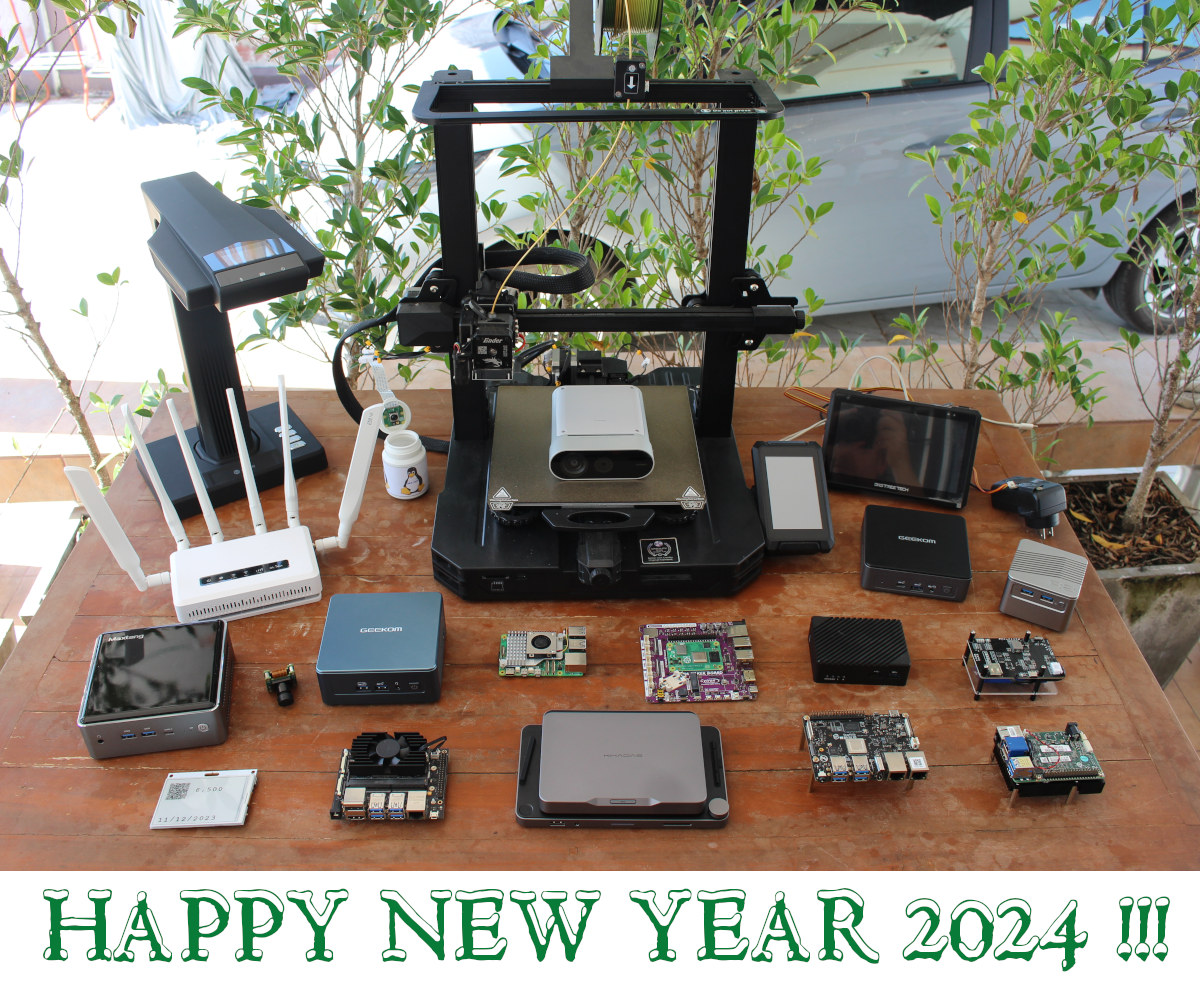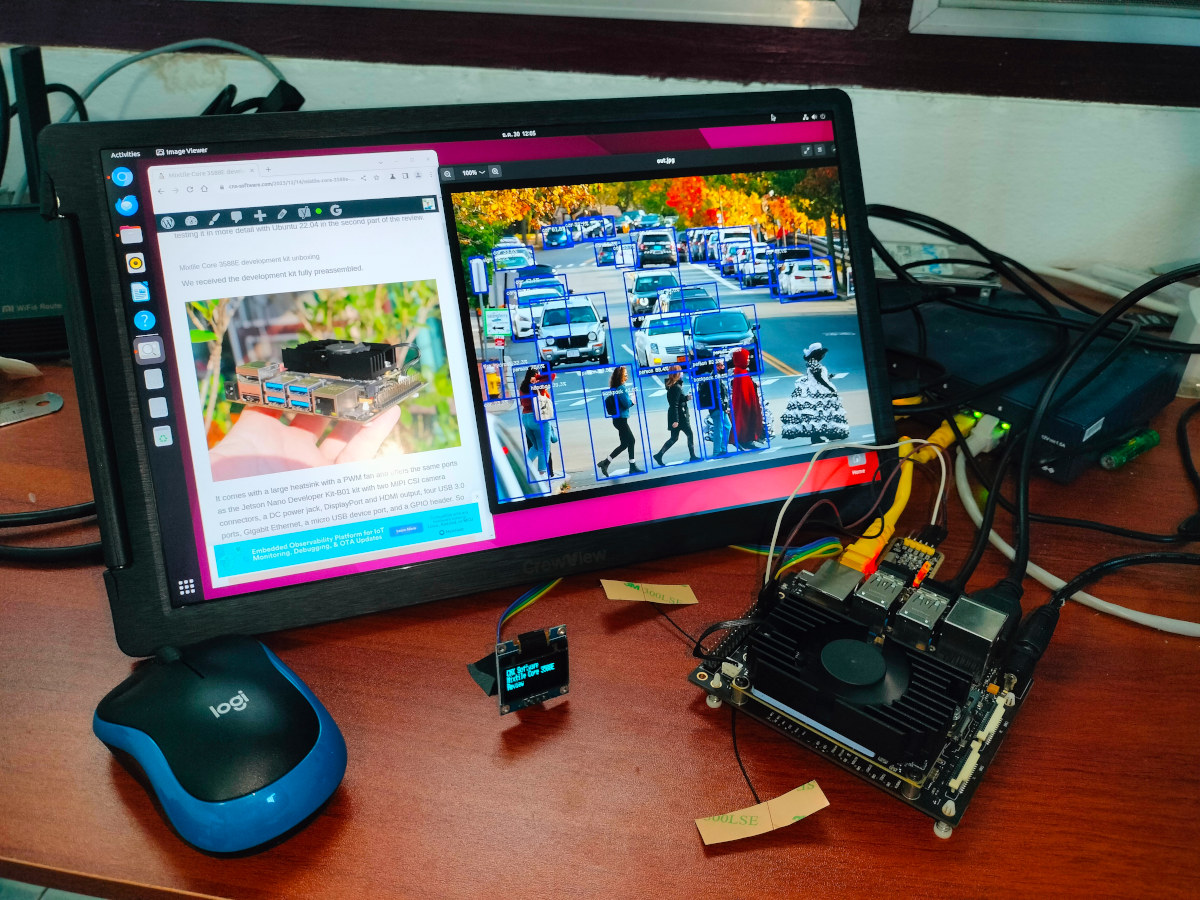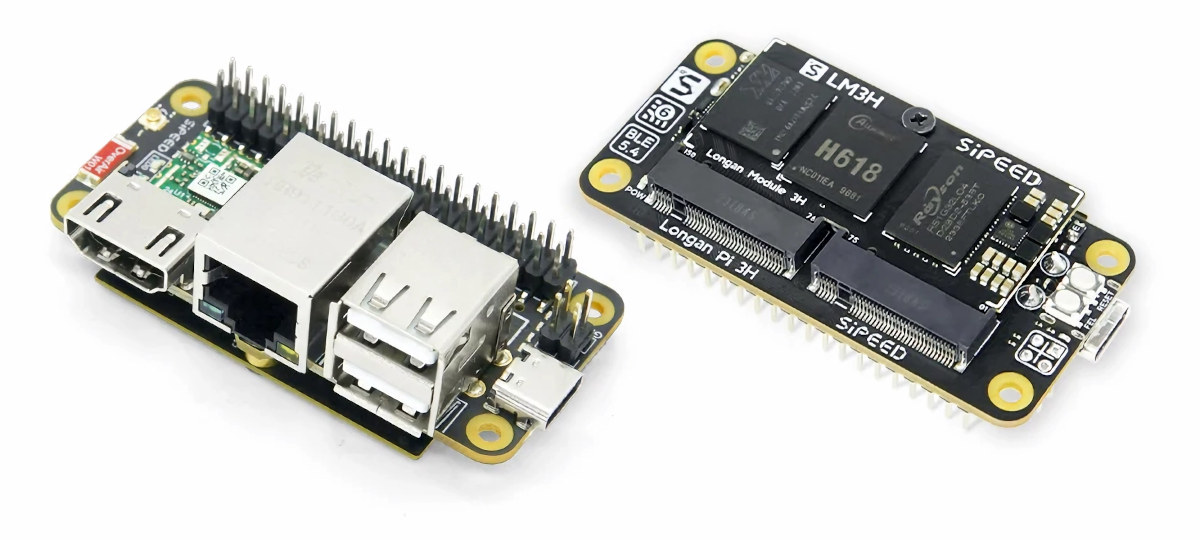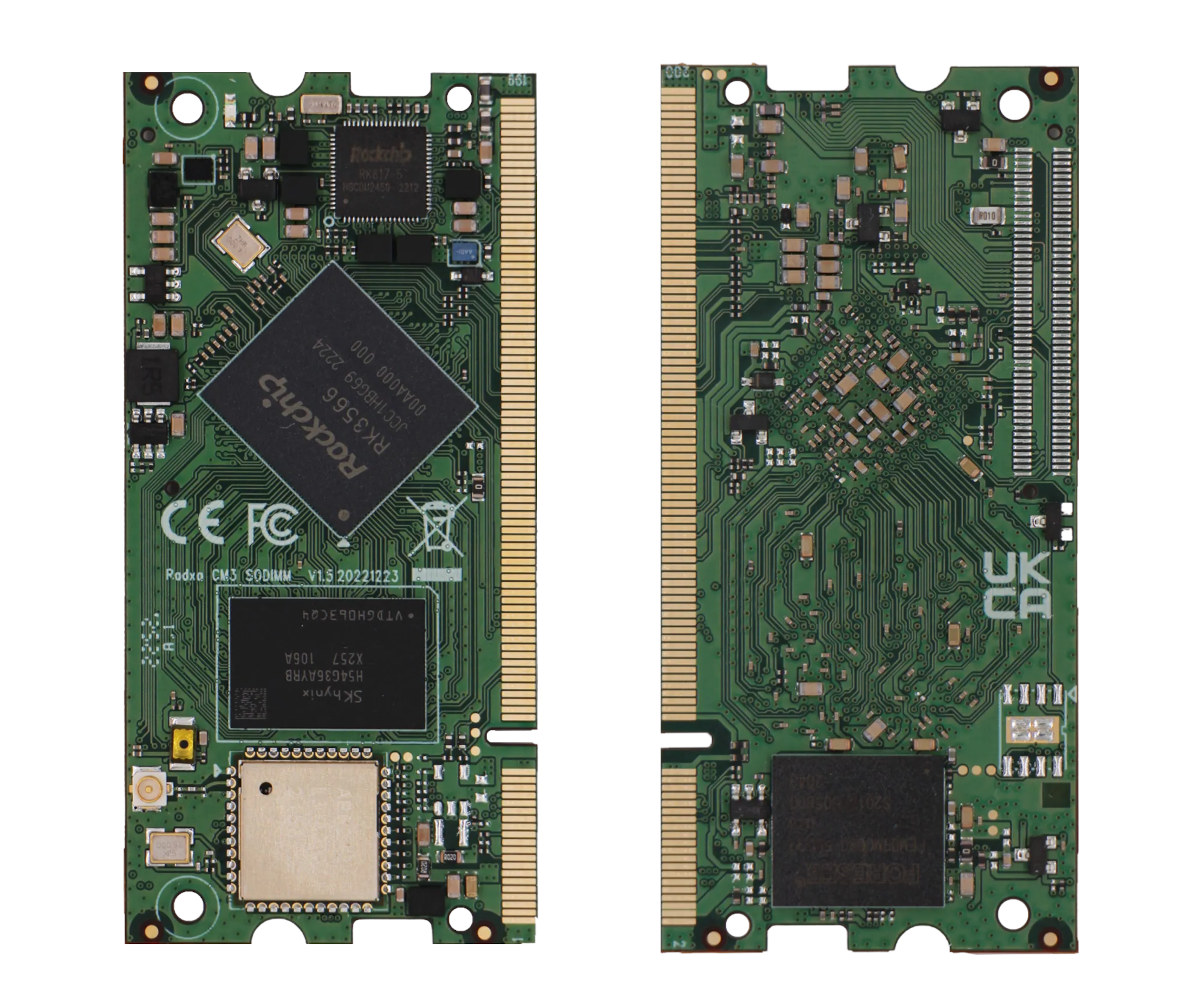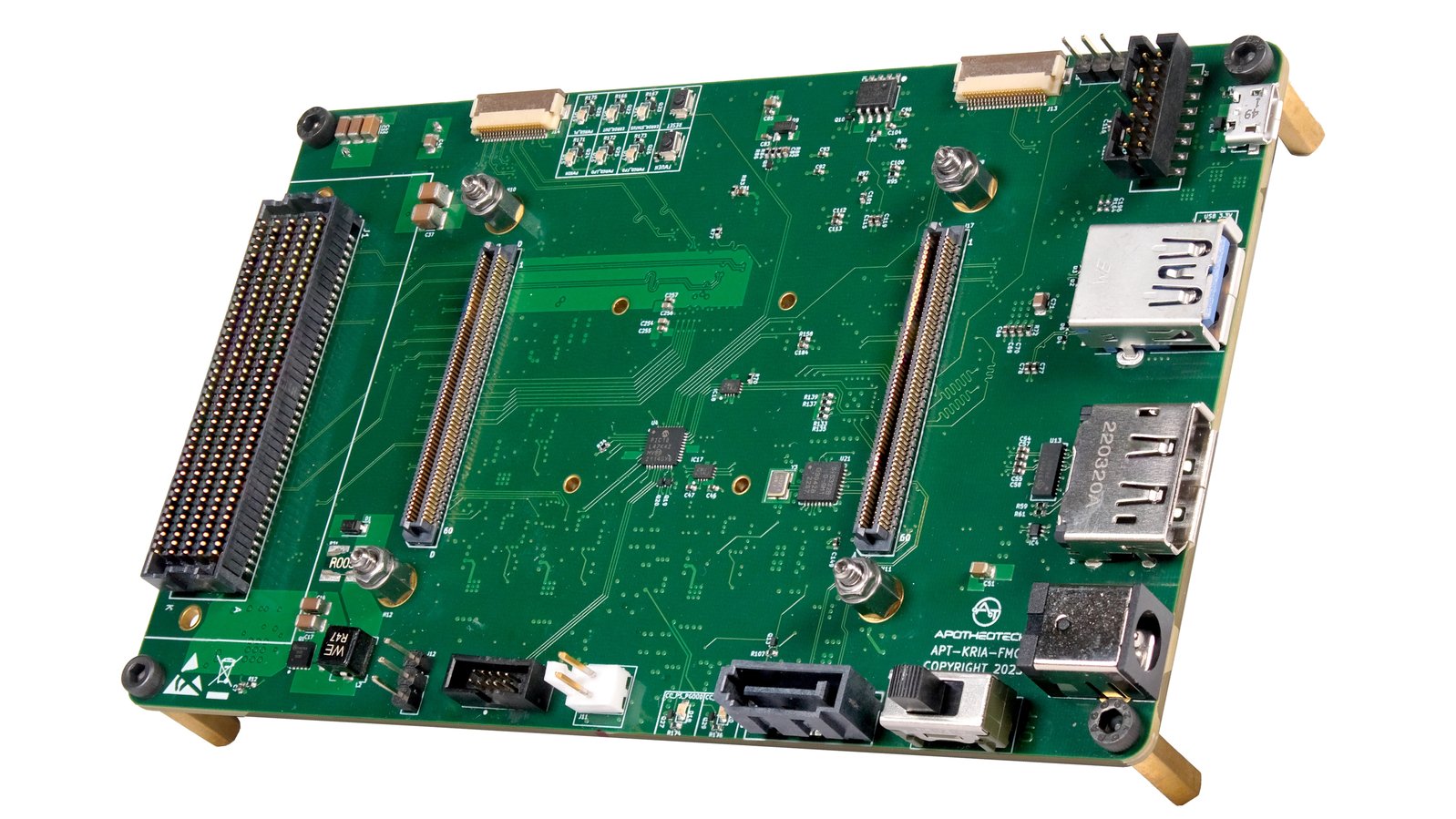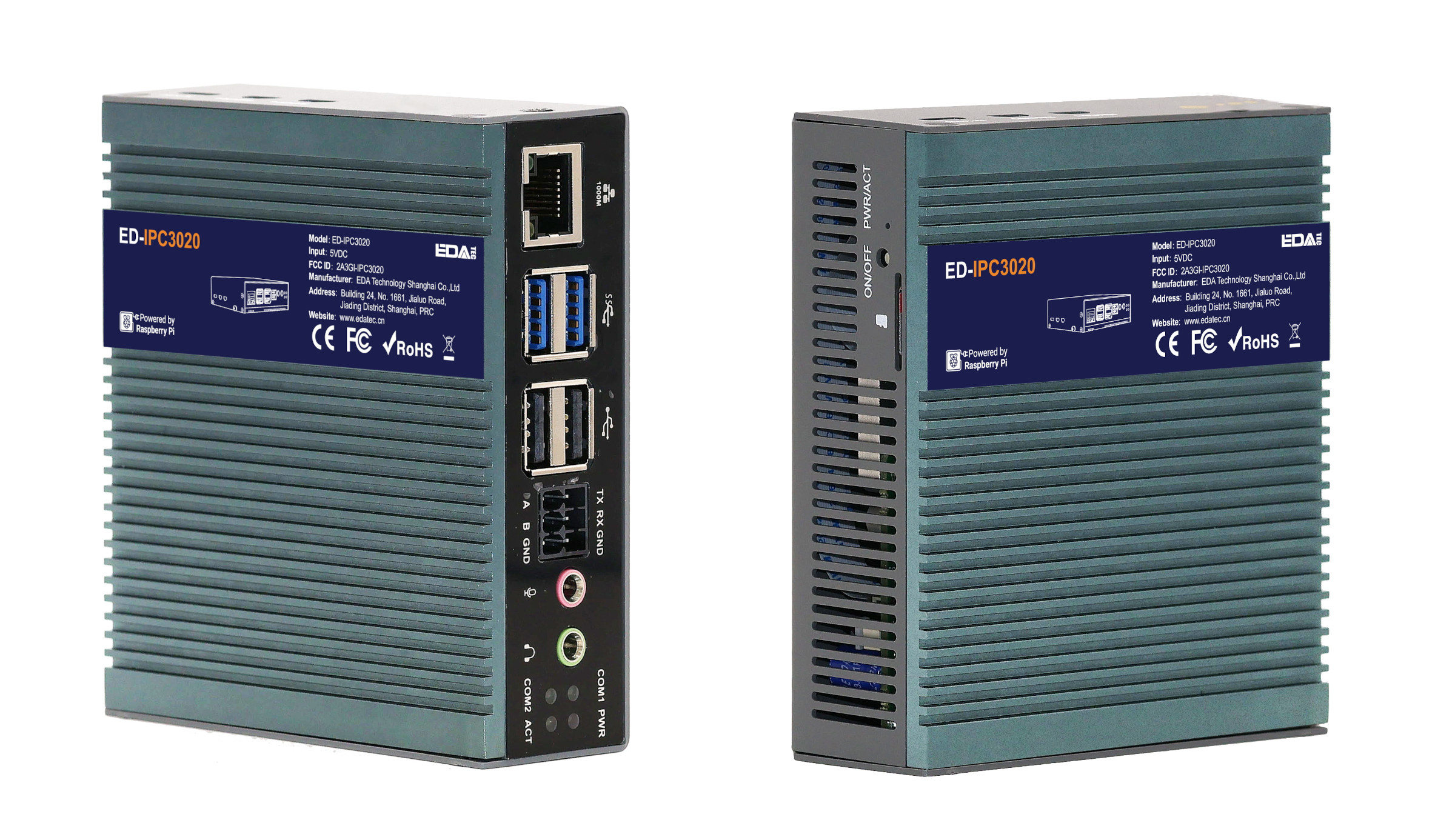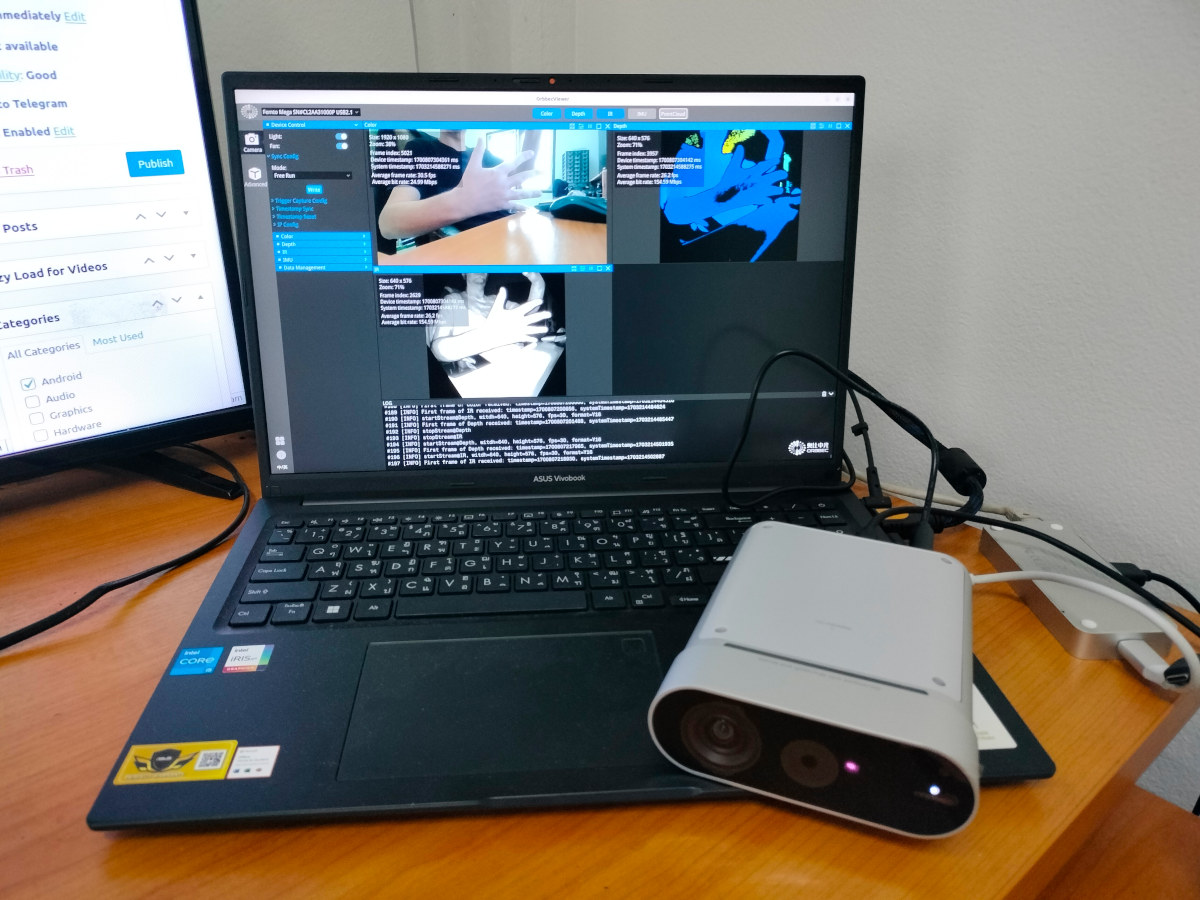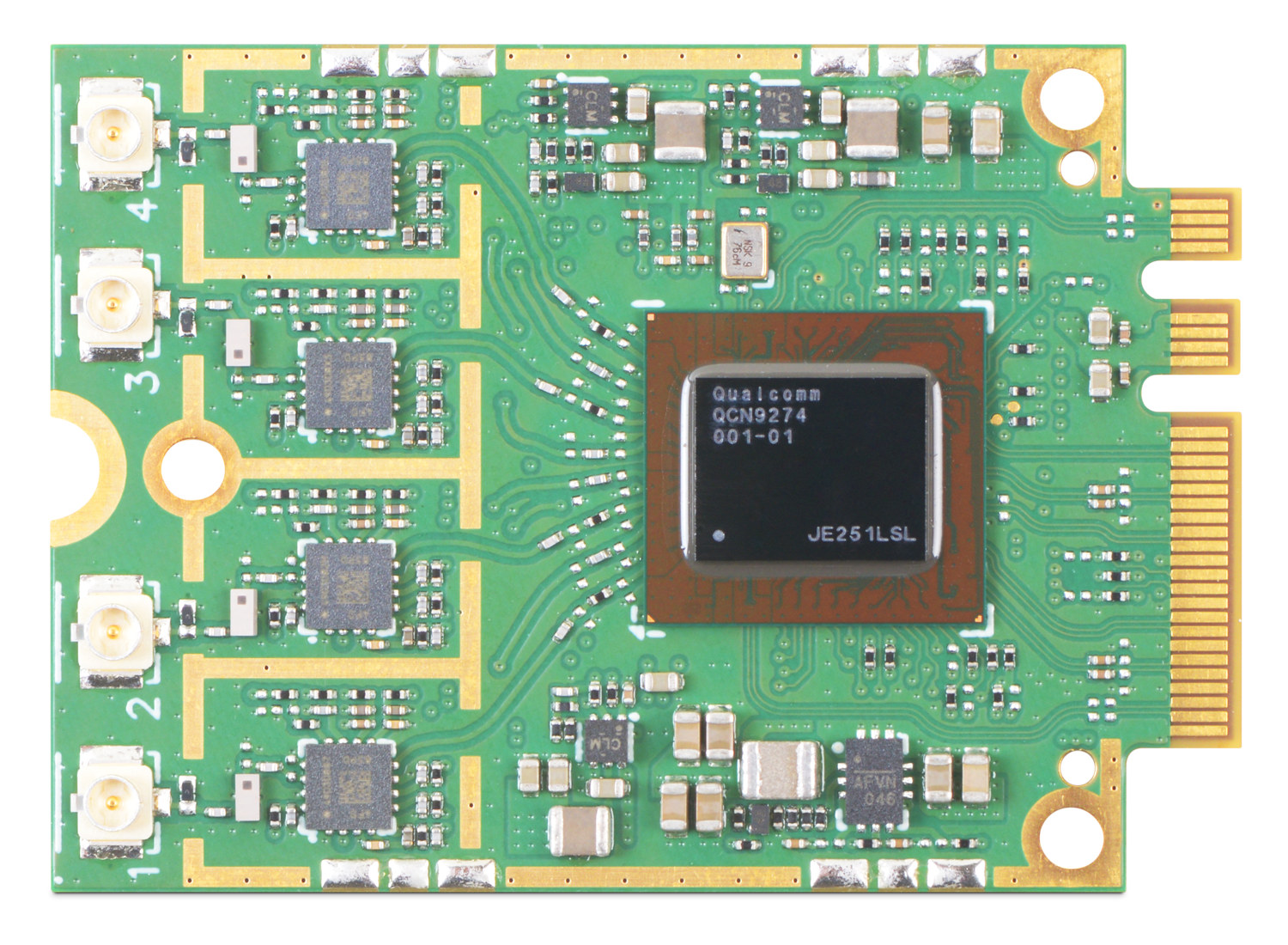It’s the last day and last article of the year, so we will look at some highlights of 2023, some traffic statistics on the CNX Software website, and speculate what interesting developments may happen in 2024. Looking back at 2023 The semiconductor shortage that had happened since 2020 started to fade away in early 2023, and supplies for most electronics components and devices seem to be adequate at this time, so that was a bright spot this year, and hopefully, it will stay that way in 2024 despite geopolitical tensions. We did not have any super exciting new Arm application processors from Rockchip, Amlogic, or Allwinner announced this year, although the Amlogic S928X penta-core Cortex-A76/A55 CPU started to show up in some 8K TV boxes. The launch of the Raspberry Pi 5 SBC with a Broadcom BCM2712 quad-core Cortex-A76 processor was probably the main highlight for Arm on this side […]
Mixtile Core 3588E SoM review – Part 2: Ubuntu 22.04, hardware features, RK3588 AI samples, NVIDIA Jetson compatibility
We’ve already had a look at the Mixtile Core 3588E NVIDIA Jetson Nano/TX2 NX/Xavier NX/Orin Nano compatible Rockchip RK3588 SO-DIMM system-on-module in the first part of the review with an unboxing and first boot with an Ubuntu 22.04 OEM installation. I’ve now had more time to play with the devkit comprised of a Core 3588 module in 16GB/128GB configuration and a Leetop A206 carrier board with low-level features testing, some benchmarks, multimedia testing with 3D graphics acceleration and video playback, some AI tests using the built-in 6 TOPS NPU and the RKNPU2 toolkit, and finally I also tried out the system-on-module with the carrier board from an NVIDIA Jetson Nano developer kit. Ubuntu 22.04 System info We had already checked some of the system information in the first part of the Mixtile Core 3588E review, but here’s a reminder:
|
1 2 3 4 5 6 7 8 9 10 11 12 13 14 15 16 17 18 19 20 21 22 |
jaufranc@Mixtile-RK3588E:~$ uname -a Linux Mixtile-RK3588E 5.10.160-rockchip #18 SMP Wed Dec 6 15:11:42 UTC 2023 aarch64 aarch64 aarch64 GNU/Linux jaufranc@Mixtile-RK3588E:~$ cat /etc/lsb-release DISTRIB_ID=Ubuntu DISTRIB_RELEASE=22.04 DISTRIB_CODENAME=jammy DISTRIB_DESCRIPTION="Ubuntu 22.04.3 LTS" jaufranc@Mixtile-RK3588E:~$ df -h Filesystem Size Used Avail Use% Mounted on tmpfs 1.6G 2.7M 1.6G 1% /run /dev/mmcblk0p2 113G 7.5G 101G 7% / tmpfs 7.7G 0 7.7G 0% /dev/shm tmpfs 5.0M 8.0K 5.0M 1% /run/lock tmpfs 4.0M 0 4.0M 0% /sys/fs/cgroup /dev/mmcblk0p1 512M 101M 411M 20% /boot/firmware tmpfs 1.6G 60K 1.6G 1% /run/user/0 tmpfs 1.6G 76K 1.6G 1% /run/user/130 tmpfs 1.6G 68K 1.6G 1% /run/user/1000 jaufranc@Mixtile-RK3588E:~$ free -mh total used free shared buff/cache available Mem: 15Gi 601Mi 13Gi 47Mi 1.4Gi 14Gi Swap: 2.0Gi 0B 2.0Gi |
I also ran inxi to check a few more details. […]
Sipeed Longan Pi3H – A Raspberry Pi Zero-sized board with gigabit Ethernet, WiFi 6, HDMI, and USB ports
Sipeed Longan Pi3H is a Raspberry Pi Zero-sized single board computer (SBC) powered by an Allwinner H618 quad-core Cortex-A53 processor and equipped with full-size connectors namely an HDMI 2.0 video output, two USB 2.0 Type-A ports, and a gigabit Ethernet RJ45 jack. It also offers WiFi 6 and Bluetooth 5.4 connectivity, features the usual 40-pin GPIO header found in Pi Zero boards and relies on a USB OTG Type-C port for power. Its design is unusual for a board of that size, not only because of the full-size ports, but also because it’s comprised of a carrier board and a replaceable LM3H CPU module with the Allwinner H618 SoC, RAM, and eMMC flash. Sipeed Longan Pi3H specifications: SoC – Allwinner H618 CPU – Quad-core Arm Cortex-A53 processor @ up to 1.5GHz with 1MB L2 cache GPU – Arm Mali-G31 MP2 GPU with support for OpenGL ES 1.0/2.0/3.2, OpenCL 2.0, Vulkan […]
Radxa CM3S Rockchip RK3566 SODIMM system-on-module supports up to 8GB RAM, 128GB flash, wireless module
Radxa CM3S (Compute Module 3 SODIMM), also called the ROCK3 Compute Module SODIMM, is a system-on-module with a 200-pin SO-DIMM edge connector powered by a Rockchip RK3566 processor with up to 8GB RAM, 128GB eMMC flash, and an optional wireless module with WiFi 4 and Bluetooth 4.2. It follows the company’s CM3 module with Raspberry Pi CM4 form factor based on the same Rockchip RK3566 SoC, but in a more compact SO-DIMM form factor with a 200-pin edge connector that’s compatible with the Raspberry Pi Compute Module 3/3+, but not compatible with NVIDIA’s Jetson Nano, Xavier NX, and Orin NX 260-pin SO-DIMM modules, and you’d need to wait for the upcoming Radxa NX5 instead… Radxa CM3S specifications can be found below along with the ones for the Radxa CM3 and Rockchip RK3568-based Radxa CM3I system-on-modules. Note that some of the specifications differ depending on where you look on the Radxa […]
Aper-Oculus is an open-source camera development board for AMD Xilinx’s Kria SoM (Crowdfunding)
The Aper-Oculus board is an open-source hardware camera carrier board for the AMD Xilinx Kria system-on-modules aimed at high-speed computer vision applications. The carrier board is built around the Sony SLVS-EC (Scalable Low-Voltage Signaling with Embedded Clock), a high-speed interface standard that delivers high-resolution video output to the FPGA. It also features several connectivity options, including dual MIPI connectors, USB 3.0, DisplayPort, and SATA to accommodate the varying demands of AI and robotics projects. The Kria K24 and K26 SOMs are adaptive system-on-modules designed for edge and vision applications. These small modules are ruggedized and come with hardware acceleration enabled out-of-the-box. The Kria lineup also includes a series of starter kits, such as the KR260 Robotics Starter Kit, which are designed for early evaluation and development. Aper-Oculus specifications: Processor-Board Support – Compatible with AMD Xilinx Kria SOMs Video Interface – SLVS-EC for high-speed, high-quality video input Expansion – FMC connector […]
EDATEC ED-IPC3020 – A fanless Raspberry Pi 5 industrial computer with an M.2 NVMe SSD, RS485/RS232 interfaces
EDATEC ED-IPC3020 is a fanless industrial computer based on the Raspberry Pi 5 SBC with support for an M.2 NVMe SSD up to 2260 in size, RS232 and RS485 serial ports, and stereo audio input and output jacks. The Raspberry Pi 5 single board computer could already support an M.2 NVMe SSD thanks to add-on boards such as the PineBerry Pi HatDrive and Pimoroni NVMe Base, but with the ED-IPC3020 we have a complete Raspberry Pi 5-powered computer with M.2 NVMe storage. EDATEC ED-IPC3020 specifications: SBC – Raspberry Pi 5 Model B SoC – Broadcom BCM2712 quad-core Arm Cortex-A76 processor clocked up to 2.4 GHz, VideoCore VI GPU, 4Kp60 H.265 decoder Memory – 4GB and 8GB LPDDR4X-4267 SDRAM are optional Storage – MicroSD card slot for the OS Video Output – 2x micro HDMI ports up to 4Kp60 Networking Gigabit Ethernet RJ45 port with optional PoE support Dual-band 802.11ac Wi-Fi […]
Orbbec Femto Mega 3D depth camera review – Part 1: Unboxing, teardown, and first try
Orbbec sent us a Femto Mega 4K RGB and 3D depth and camera for review. The camera is powered by an NVIDIA Jetson Nano module, features Microsoft ToF technology, and outputs RGB, TOF, and IR data through a USB-C port or a gigabit Ethernet port. I’ll start the two-part with an unboxing, a teardown, and a quick try with the OrbbecViewer program on Ubuntu 22.04 in the first part of the review because checking out the software and SDK in more detail in the second part later on. Femto Mega depth and RGB camera unboxing I received the camera in a cardboard package showing the camera model and key features: “ORBBEC Femto Mega DEPTH+RGB CAMERA”. The package’s content is comprised of a USB-C cable to connect to the host, the camera, and a 12V/2A power adapter. The front side of the camera features the RGB camera sensor, the TOF (Time-of-Flight) […]
8Devices Noni M.2 WiFi 7 module supports FirmUx embedded Linux distribution
8Devices Noni is a family of M.2 A+E-Key WiFi 7 modules built on the QCN9274/QCN6274 chipsets, delivering up to 11 Gbps link rate in 4×4 MIMO or split 2×2 + 2×2 configurations, and supporting FirmUX embedded Linux OS. The Noni modules support Multi-Link Operation (MLO) for simultaneous communication on different frequencies and adaptive interference puncturing in order to maintain performance in various environments and the QCN9274-based variants also support advanced features such as Provisioned Multi-Link, Dense deployment, and Location and RF sensing. 8devices Noni specifications: All the Noni modules support a 2-lane PCIe Gen 3 interface connection to the host device. 8devices Noni modules support the FirmUX embedded Linux platform that provides developers a choice between fully open-source or proprietary Qualcomm drivers. The OS enables WPA3 security, comes with a responsive UI dashboard, supports Wireguard VPN, and the company claims up to 34 percent improvement over OpenWrt on the earlier […]


